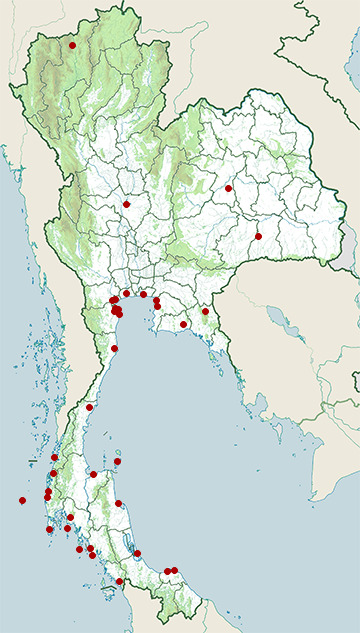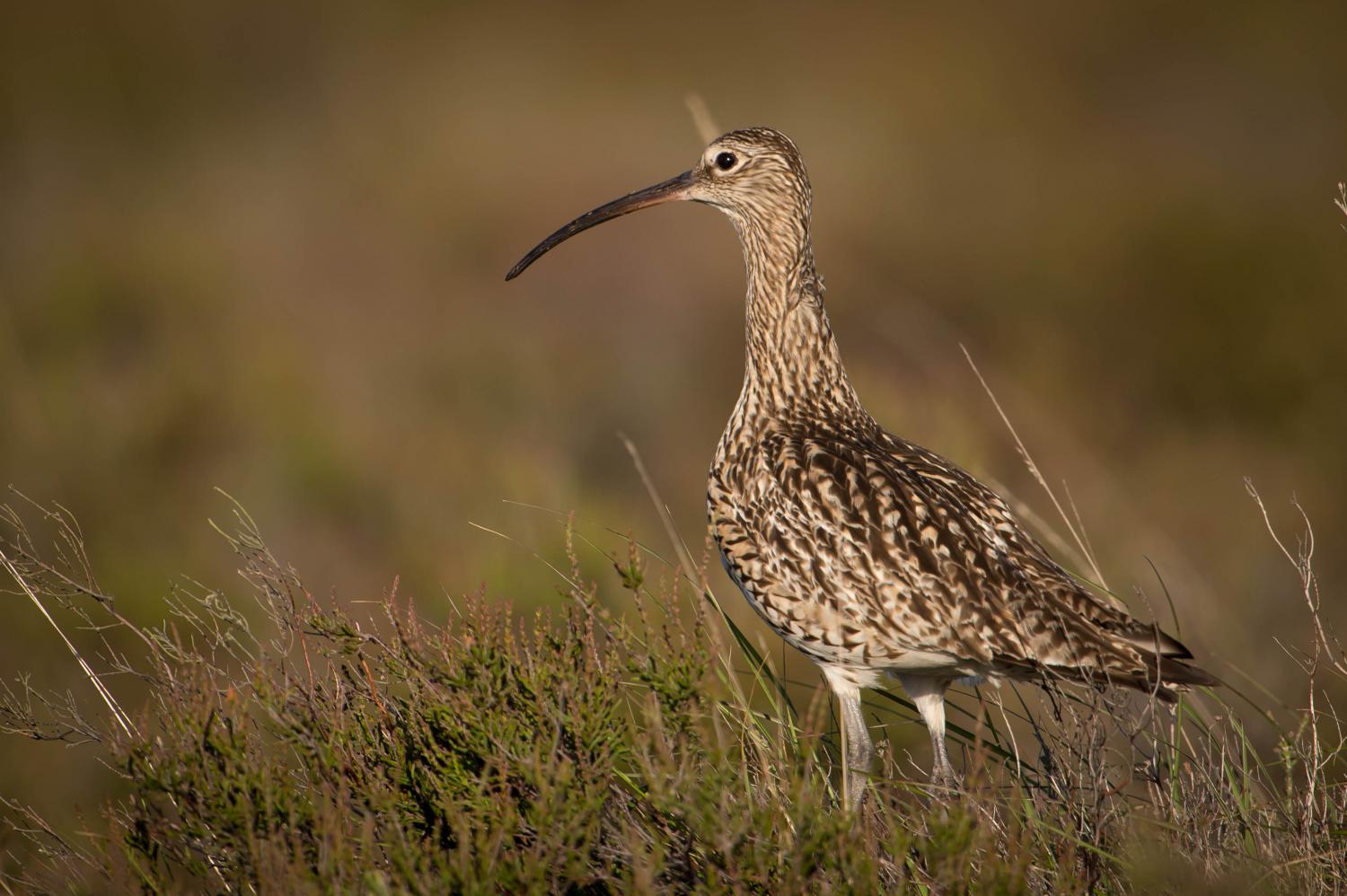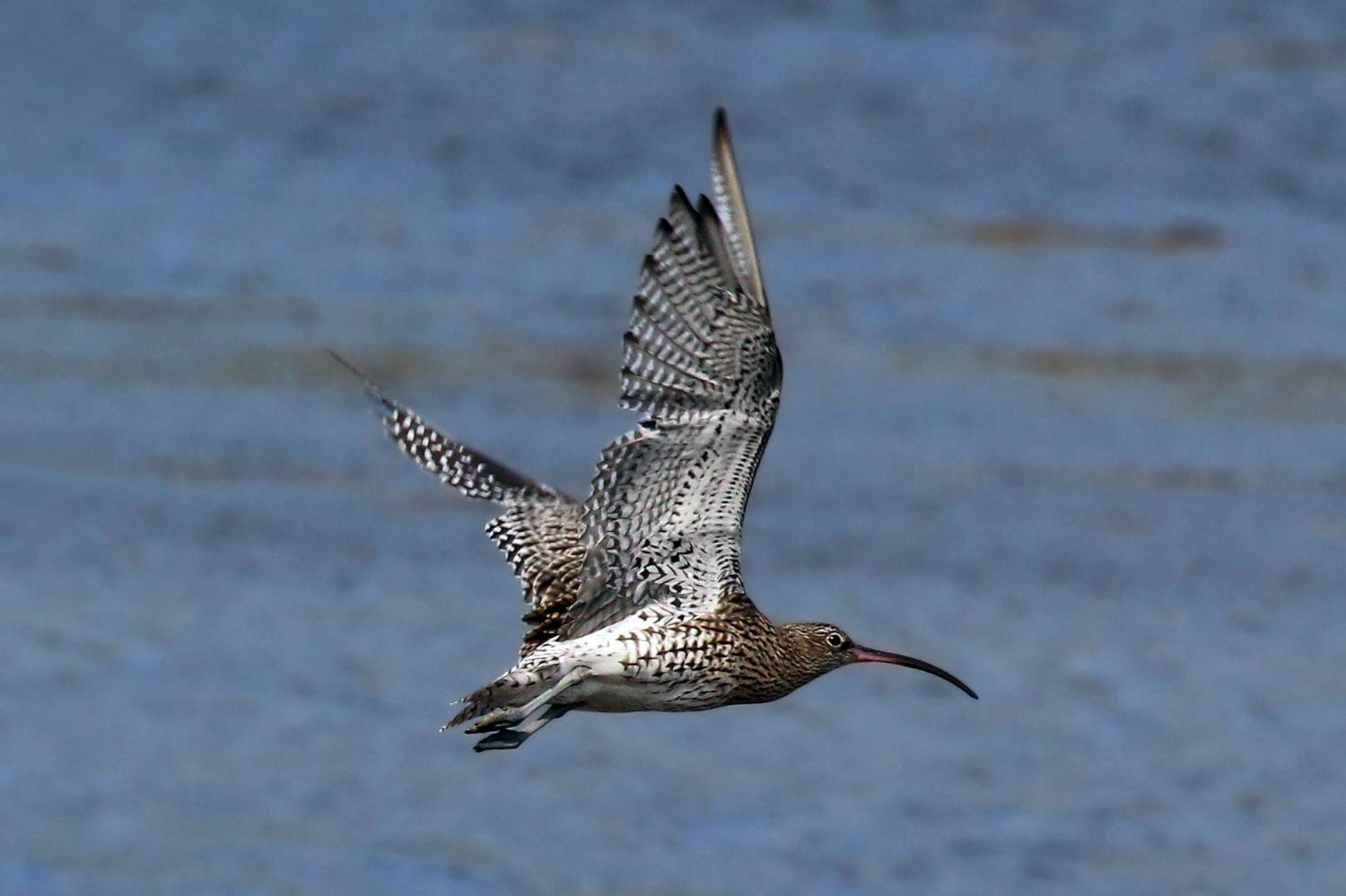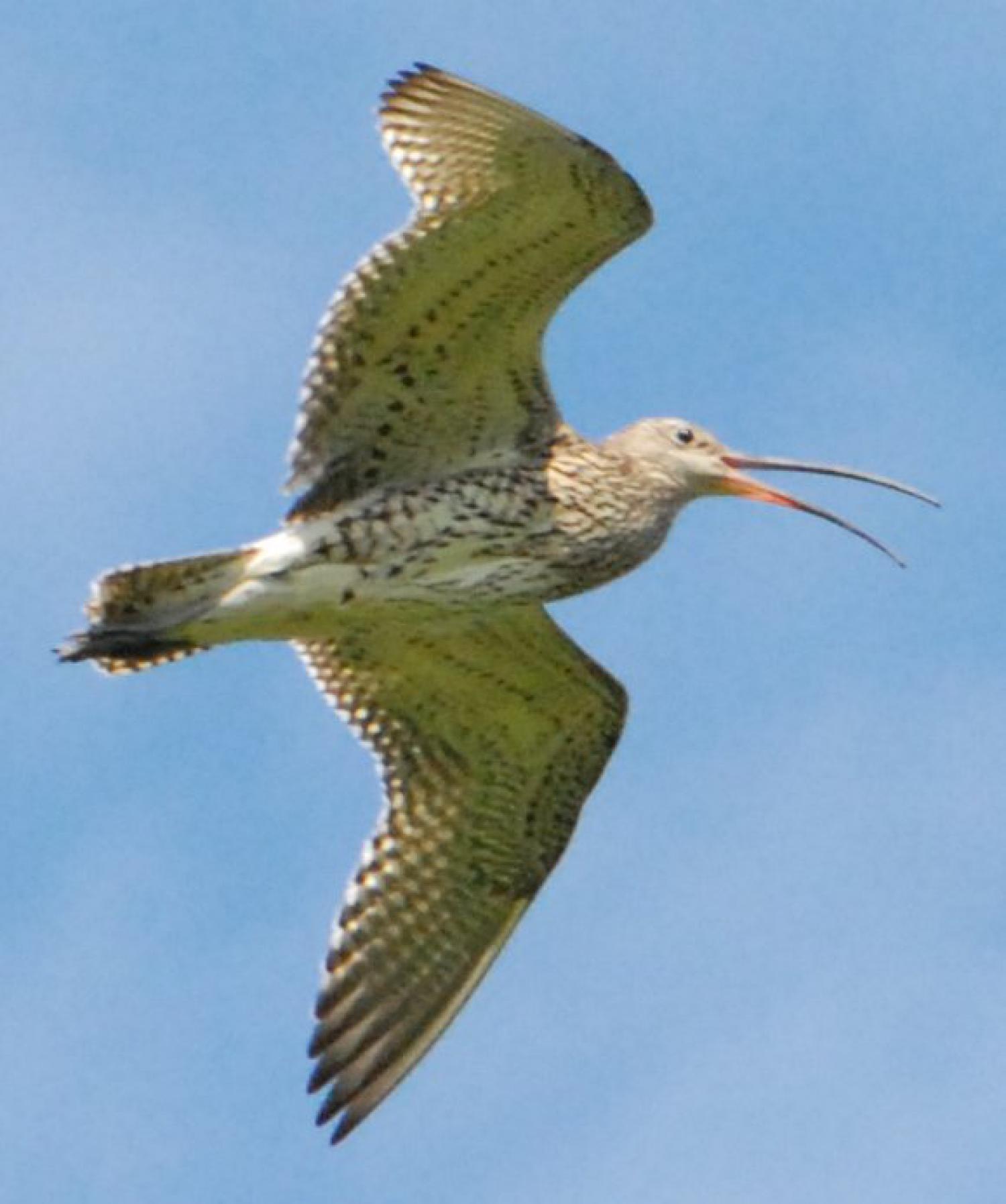Species of Thailand
Eurasian curlew
Numenius arquata
Carolus Linnaeus, 1758
In Thai: นกอีก๋อยใหญ่
The Eurasian curlew or common curlew (Numenius arquata) is a wader in the large family Scolopacidae. It is one of the most widespread of the curlews, breeding across temperate Europe and Asia. In Europe, this species is often referred to just as the "curlew", and in Scotland known as the "whaup" in Scots.
This is the largest wader in its range, at 50 - 60 cm in length, with an 89 - 106 cm wingspan and a body weight of 410 - 1360 g. It is mainly greyish brown, with a white back, greyish-blue legs and a very long curved bill. Males and females look identical, but the bill is longest in the adult female. It is generally not possible to recognize the sex of a single Eurasian curlew, or even several ones, as there is much variation; telling male and female of a mated pair apart is usually possible however.
The familiar call is a loud curloo-oo.
The only similar species over most of the curlew's range is the Eurasian whimbrel (N. phaeopus). The whimbrel is smaller and has a shorter bill with a kink rather than a smooth curve. Flying curlews may also resemble bar-tailed godwits (Limosa lapponica) in their winter plumages; however, the latter have a smaller body, a slightly upturned beak, and legs that do not reach far beyond their tail tips. The Eurasian curlew's feet are longer, forming a conspicuous "point".
The curlew exists as a migratory species over most of its range, wintering in Africa, southern Europe and south Asia. Occasionally a vagrant individual reaches places far from its normal range, such as Nova Scotia and the Marianas. It is present all year in the milder climates of Ireland and the United Kingdom and its adjacent European coasts.
Etymology
The English name "curlew" is imitative of the Eurasian curlew's call, but may have been influenced by the Old French corliu, "messenger", from courir , "to run". It was first recorded in 1377 in Langland's Piers Plowman "Fissch to lyue in þe flode..Þe corlue by kynde of þe eyre". The genus name Numenius is from Ancient Greek νουμήνιος, noumēnios, a bird mentioned by Hesychius. It is associated with the curlew because it appears to be derived from neos, "new" and mene "moon", referring to the crescent-shaped bill. The species name arquata is the Medieval Latin name for this bird, derived from Latin arcuatus, "bow-shaped", and again referring to the shape of the bill.
Subspecies
There are three subspecies of the Eurasian curlew:
- N. a. arquata, (Linnaeus, 1758): breeds in west, north & central Europe.
- N. a. orientalis, Brehm, 1831: breeds in west & central Siberia through to Northeast China.
- N. a. suschkini, Neumann, 1929: breeds from western Kazakhstan to southwestern Siberia.
It is generally wary. Highly gregarious outside the breeding season, the Eurasian curlew feeds by probing soft mud for small invertebrates, but will also pick small crabs and earthworms off the surface if the opportunity arises.
The nest is a bare scrape on taiga, meadow, and similar habitats. Each curlew lays between 3 and 6 eggs in April or May and incubates them for about a month until they begin to hatch. It has been observed that curlews tend to nest close to common kestrel's nests, as they can offer protection from other predators, such as corvids, even though kestrels also predate curlew nests .
The curlew is one of the species to which the Agreement on the Conservation of African-Eurasian Migratory Waterbirds (AEWA) applies.
Formerly classified as a species of Least Concern by the IUCN, it was suspected to be rarer than generally assumed. Following the evaluation of its population size, the classification was found to be incorrect, and it was consequently promoted to Near Threatened status in 2008. Though it is a common bird, its numbers are noticeably declining, particularly in the United Kingdom and Ireland, which have about a quarter of the global population. In the twenty years up to 2016, the population is estimated to have declined by more than 50% in England and Scotland, more than 80% in Wales, and more than 90% in Ireland. At the end of 2015 it was placed on the United Kingdom's red list of most endangered bird species.
This article uses material from Wikipedia released under the Creative Commons Attribution-Share-Alike Licence 3.0. Eventual photos shown in this page may or may not be from Wikipedia, please see the license details for photos in photo by-lines.
Category / Seasonal Status
Wiki listed status (concerning Thai population): Winter visitor
BCST Category: Recorded in an apparently wild state within the last 50 years
BCST Seasonal status: Non-breeding visitor
Scientific classification
- Kingdom
- Animalia
- Phylum
- Chordata
- Class
- Aves
- Order
- Charadriiformes
- Family
- Scolopacidae
- Genus
- Numenius
- Species
- Numenius arquata
Common names
- English:
- Curlew
- Eurasian curlew
- French: Courlis cendré
- Thai: นกอีก๋อยใหญ่
Subspecies
Numenius arquata arquata, Carolus Linnaeus, 1758
Range: Breeds in west, north & central Europe.
Numenius arquata orientalis, Christian Ludwig Brehm, 1831
Range: Breeds in west & central Siberia through to Manchuria.
Numenius arquata suschkini, Oscar Rudolph Neumann, 1929
Range: Breeds from western Kazakhstan to southwestern Siberia.
Conservation status

Near Threatened (IUCN3.1)

Near Threatened (BirdLife)

Near Threatened (ONEP)

Near Threatened (BCST)
Photos
Please help us review the bird photos if wrong ones are used. We can be reached via our contact us page.
Range Map

- Amphawa District, Samut Songkhram
- Ban Laem District, Phetchaburi
- Ban Phai District, Khon Kaen
- Bang Phra Non-Hunting Area
- Bang Pu Recreation Centre
- Bueng Boraped Non-Hunting Area
- Chiang Dao District, Chiang Mai
- Hat Chao Mai National Park
- Khao Lak - Lam Ru National Park
- Khao Sam Roi Yot National Park
- Khao Soi Dao Wildlife Sanctuary
- Khura Buri District, Phang Nga
- Klaeng District, Rayong
- Ko Lanta National Park
- Ko Libong
- Ko Samui District, Surat Thani
- Laem Pak Bia
- Laem Son National Park
- Mueang Chonburi District, Chonburi
- Mueang Krabi District, Krabi
- Mueang Pattani District, Pattani
- Mueang Phetchaburi District, Phetchaburi
- Mueang Phuket District, Phuket
- Mueang Samut Sakhon District, Samut Sakhon
- Mueang Samut Songkhram District, Samut Songkhram
- Mueang Satun District, Satun
- Mueang Surin District, Surin
- Nakhon Si Thammarat Coast
- Pak Thale
- Pathio District, Chumphon
- Pattani Coast
- Phi Phi Islands
- Similan Islands
- Songkhla Coast
- Surat Thani Coast
- Takua Pa District, Phang Nga




